Affiliate links on Android Authority may earn us a commission. Learn more.
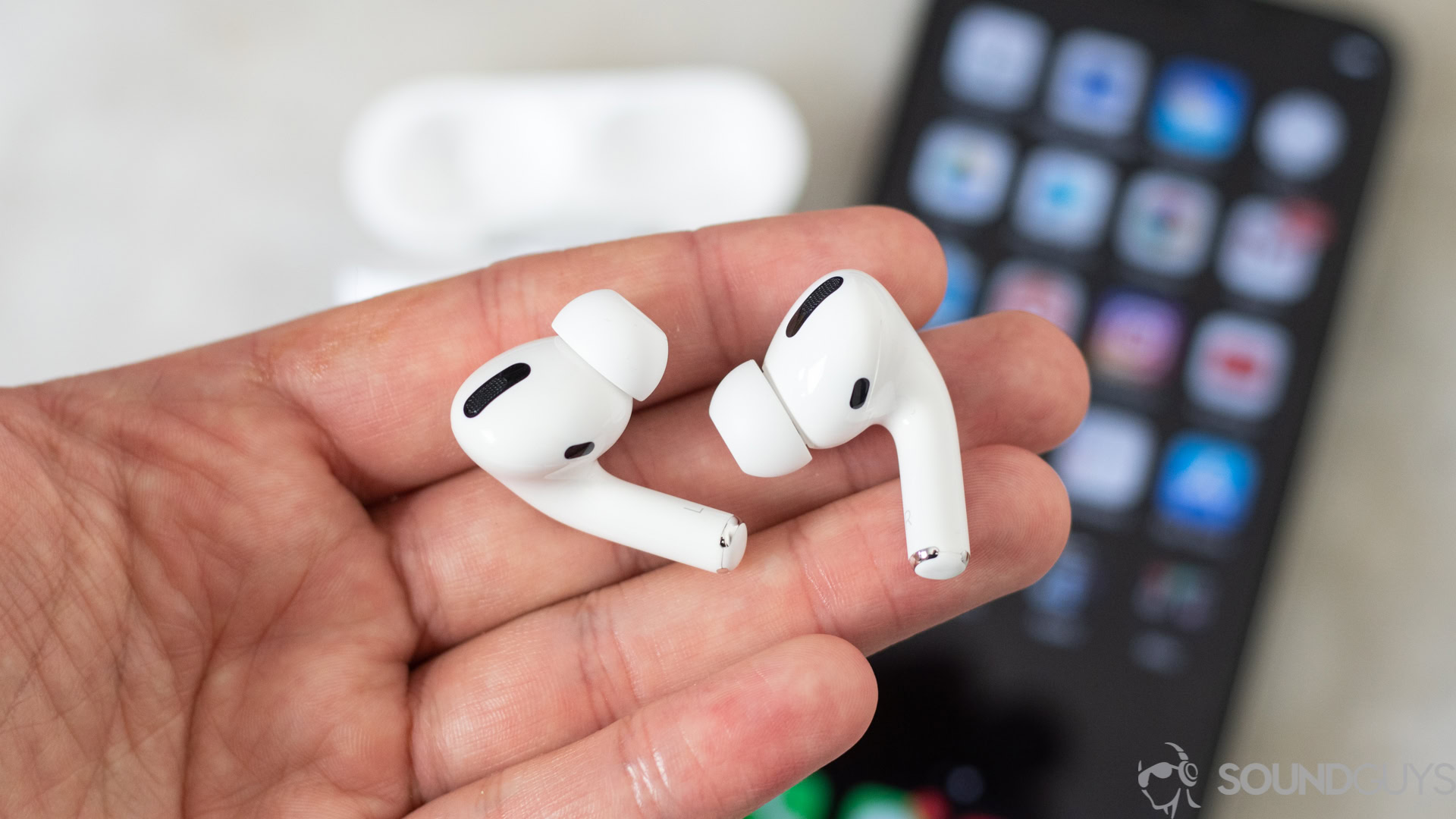


Apple AirPods Pro (1st generation)
What we like
What we don't like

Apple AirPods Pro (1st generation)
Apple finally caves to consumers’ demands with the Apple AirPods Pro which now have premium features like noise-cancelling and an IPX4 water-resistant build. We’re quick to recommend these true wireless earbuds to any iPhone user, and the only thing likely to hold you back from getting a pair is the price.
Update, March 2023: We updated this article with new charts and standardized microphone samples. The AirPods Pro (2nd generation) replaced the AirPods Pro (1st generation). Learn more at our Apple AirPods Pro (2nd generation) review.
Who should buy the Apple AirPods Pro?
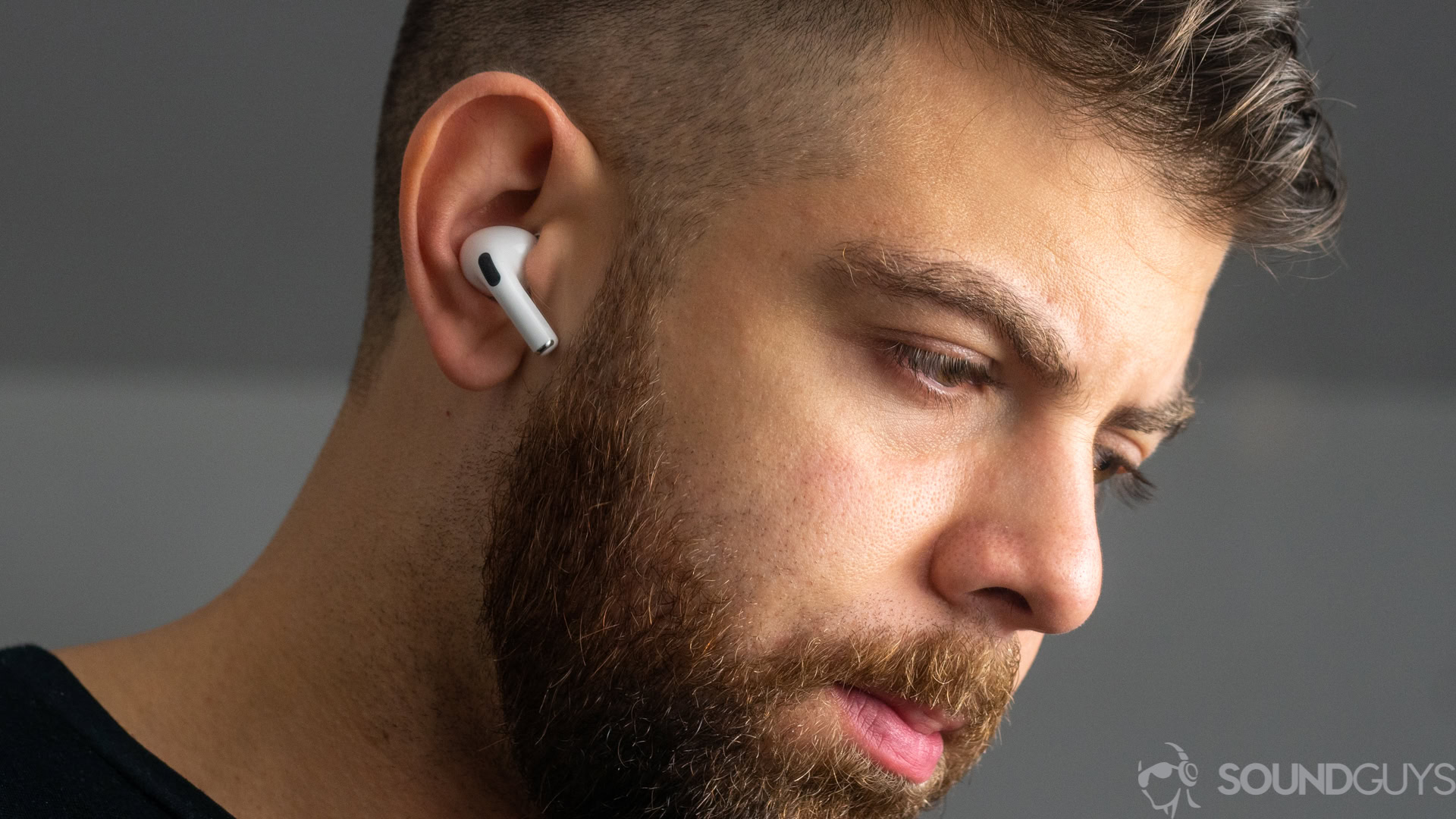
- Apple iPhone owners, or anyone with an iOS device for that matter, will get the best bang-for-your-buck from the AirPods Pro. This is the best true wireless option for iPhones due to the integrated H1 chip, which facilitates greater power efficiency and other neat tricks like hands-free Siri access.
- True wireless fans will enjoy the new AirPods Pro because effective active noise-cancelling is difficult to find in this type of wireless earphone.
- Athletes and gym-goers should consider the AirPods Pro for their IPX4 sweat-resistant build and new design which provides a more secure fit than old models.
What are the Apple AirPods Pro like?
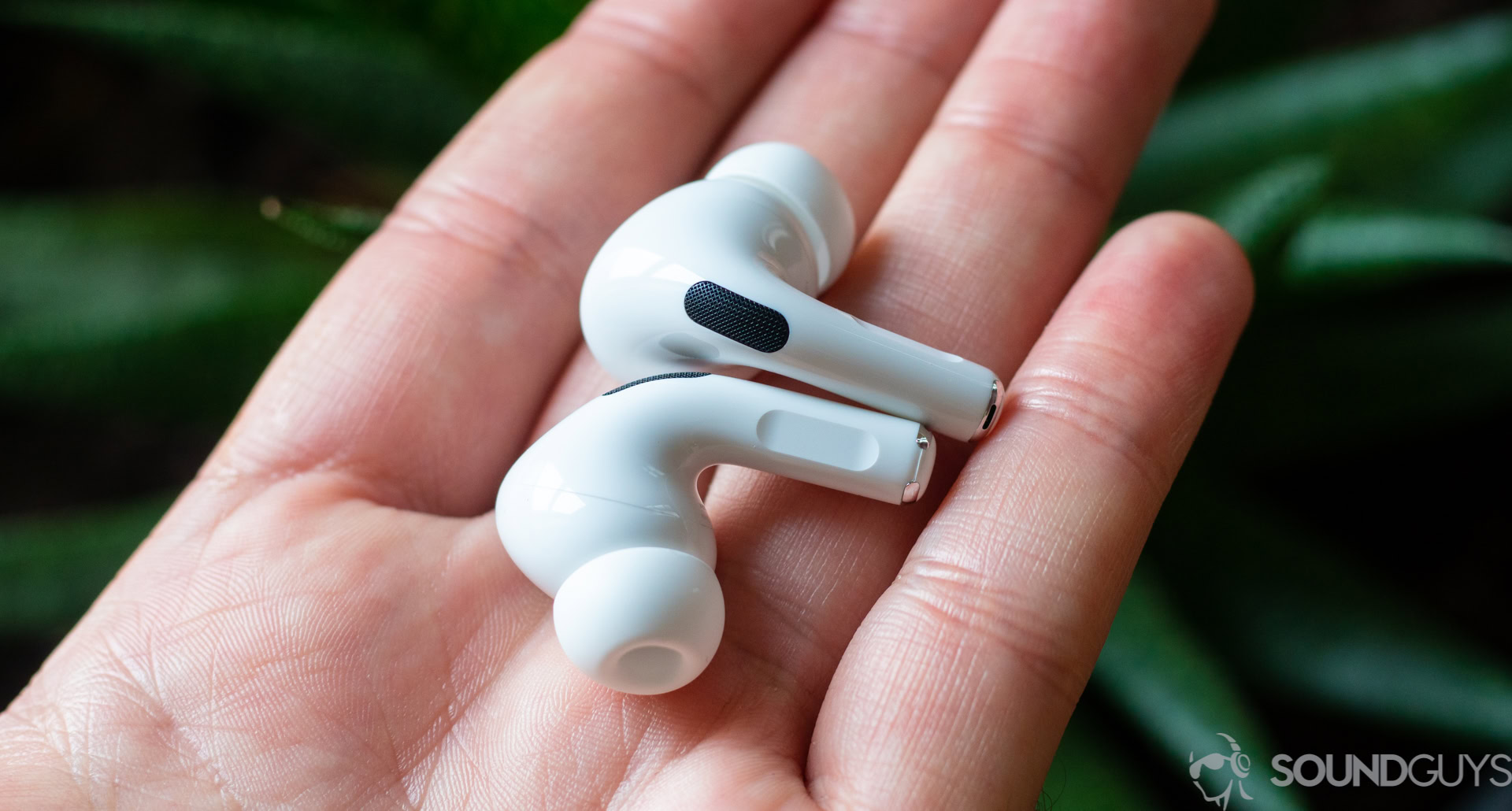
The AirPods Pro received a drastic facelift. Now, nozzles let the earbuds seal the ear canal, which improves sound quality and noise-cancelling performance. Apple clearly put a lot of thought into its ear tip design: these silicone tips perfectly fit the AirPods Pro. Rather than fitting around a nozzle that transitions into the housing, there’s a divot that the silicone collar clicks into, making it resistant to detachment.
Don’t fret if you’re unsure of how to find the best fit: the AirPods Pro can test this directly from your iPhone. Once you find the best set for you, the noise-cancelling AirPods Pro automatically pair with your iPhone by way of an on-screen pop-up. Android users, we still have to dig through our Bluetooth menus, as our platform isn’t afforded the same streamlined experience as H1 chip-compatible iPhones.

Just like the standard AirPods, the Apple AirPods Pro sport a stemmed design, but this time with a functional twist. Squeezing an indentation on either stem lets you control music playback. There are other useful features that aren’t available from your run-of-the-mill true wireless earbuds, like transparency mode. This allows external noise in through the earbuds, so you can clearly hear your subway line’s stop or respond to a train ticketer. It’s also good for remaining aware of your surroundings when running outside. To toggle transparency mode, press and hold the stem for a few seconds.
Like other Apple-manufactured products, these wireless earbuds are decked out with sensors to make the user experience absolutely seamless. Dual optical and motion-detecting sensors facilitate auto-pause and play detection when removing an earbud (iOS only). Force sensors in the stems let listeners control their music and take calls by pressing, multi-pressing, or holding the stem.
Battery life is better than before
SoundGuys recorded five hours, six minutes of constant playback with noise-cancelling turned on while connected to an iOS device. This is above average for true wireless earbuds and better than Apple’s specified 4.5-hour battery life (ANC on). With the Lightning case fully charged, you can enjoy up to 24 hours of playtime before topping up. Just five minutes in the charging case provides one hour of listening with the AirPods Pro. This time around, Apple enabled Qi wireless charging by default rather than forcing listeners to cough up more money for something Samsung, for example, includes for much less.
When iOS 14 is released, AirPods and AirPods Pro owners will receive battery notifications on their phones when their headsets need to be charged.
How to connect the Apple AirPods Pro to an Android phone
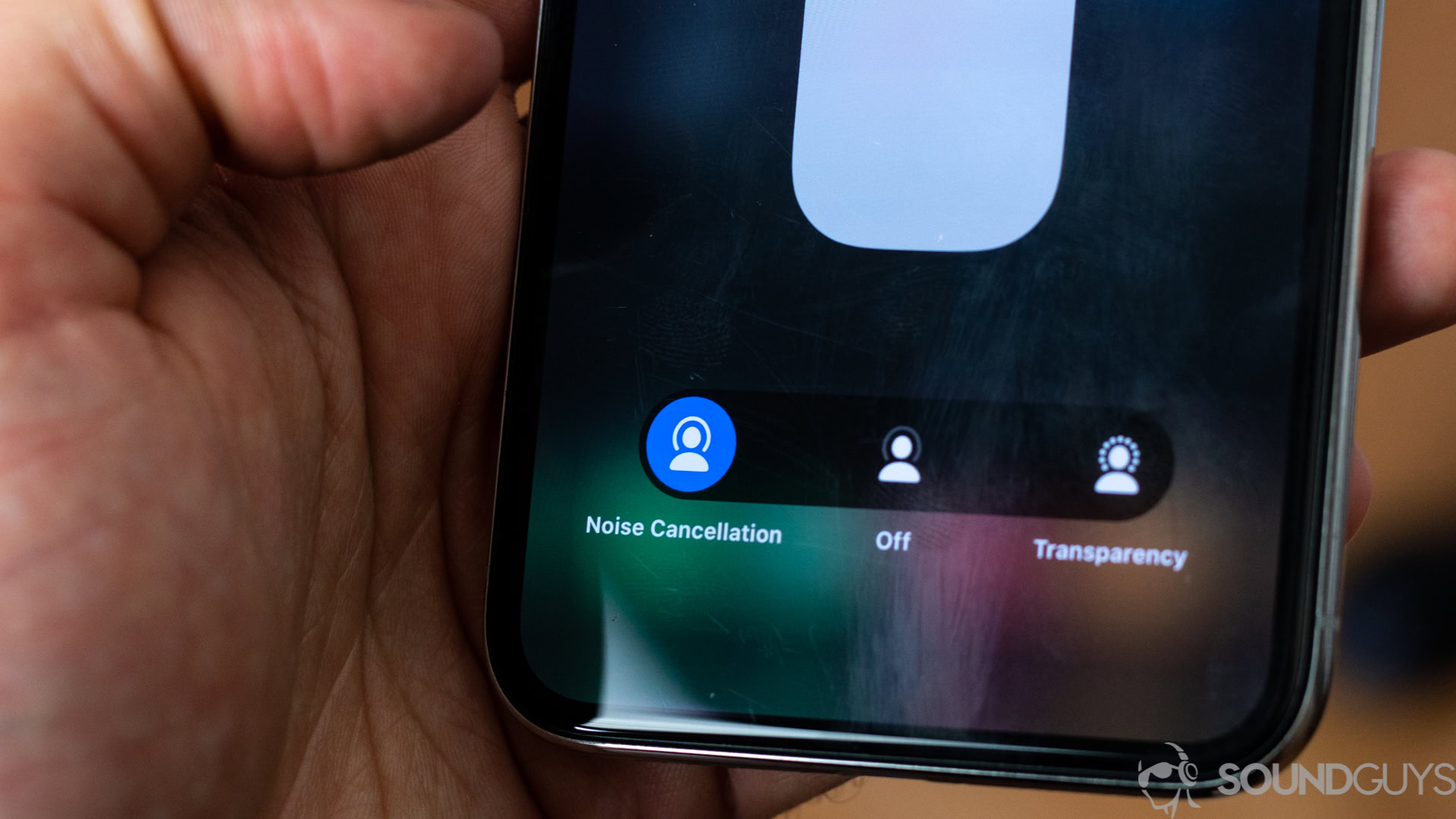
While connecting to an iOS 13.2 device is a breeze, there are a few hoops Android users need to jump through before using the AirPods Pro. If you’ve used other AirPods models, then you’re familiar with holding the button on the back of the charging case to enter Bluetooth pairing mode. After you’ve done that, dig into your smartphone’s Bluetooth settings and scan for new devices; wait until the AirPods Pro appear as an available device. Select the AirPods Pro, and the two devices will connect.
Android users aren't afforded H1 chip benefits but can still use transparency mode.
As an Android user, you’re not granted the same privileges as iPhone users. For one, auto-pause when removing one earbud doesn’t work and, of course, hands-free Siri access is unavailable. That said, the important features like noise-cancelling and transparency mode work well by pressing and holding the stems.
At WWDC 2020, Apple announced that iOS 14 will affect all AirPods models — AirPods (2018), AirPods (2019), AirPods (3rd generation), and the Apple AirPods Pro. One of the improvements will allow the buds to automatically detect which Apple device of yours is streaming audio. This means that if your AirPods were connected to your iPhone for music, but then you used your MacBook Pro to click a YouTube link your friend shared, the AirPods would immediately switch from playing your iPhone’s audio to your MacBook Pro’s.
Is the noise-cancelling good?
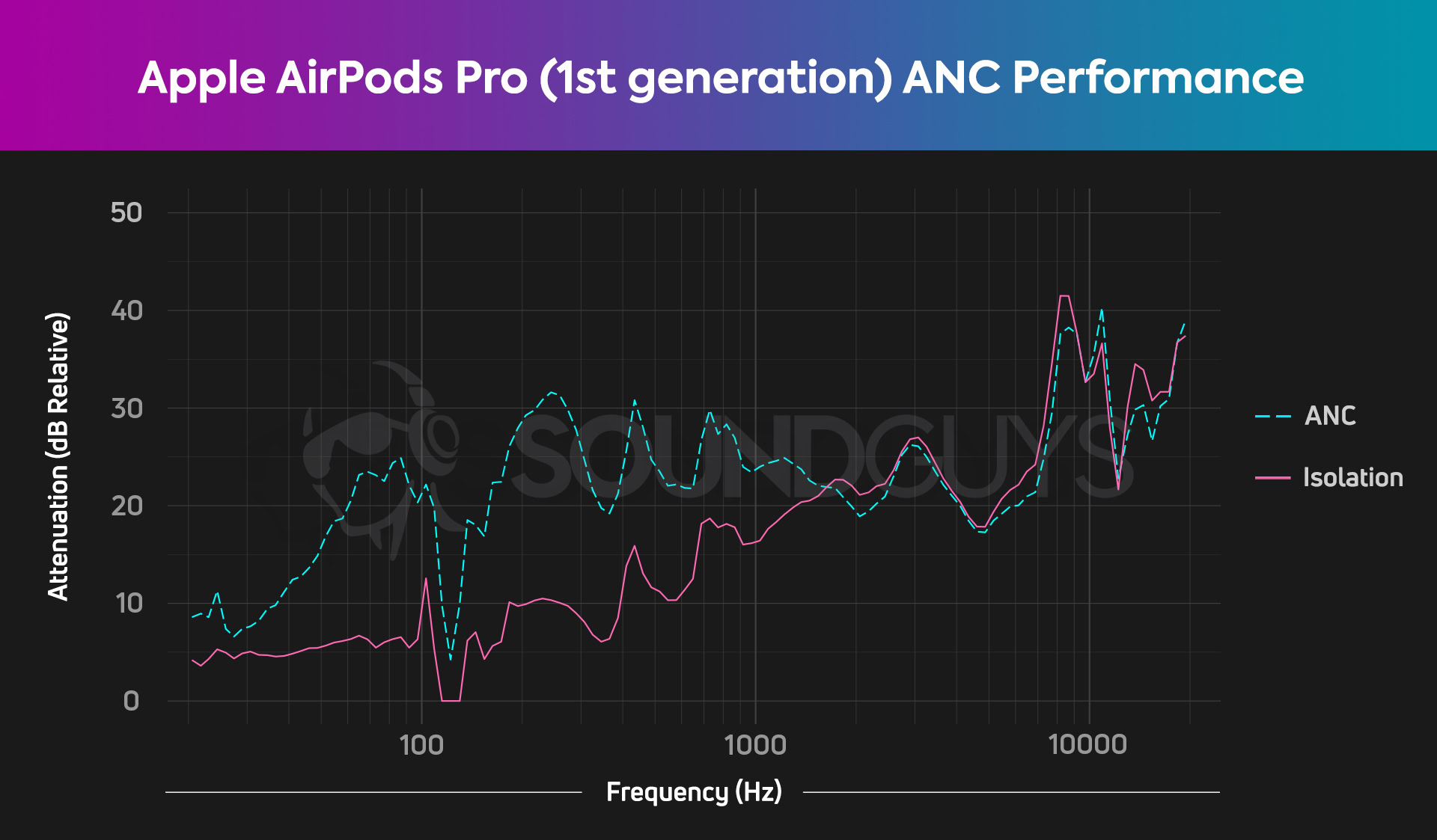
The Apple AirPods Pro noise-cancelling is good and can quiet low-frequency sounds like a loud A/C unit or plane engine. The higher the lines on the chart above, the more noise the AirPods Pro 1 cancel out. You will notice a significant difference when you toggle ANC on or off with the AirPods Pro; those low sounds are rendered about one quarter as loud as they’d sound without noise cancellation.
The AirPods Pro aren’t the best noise-cancelling earbuds available or even the best noise-cancelling true wireless earbuds — for that, you need the Sony WF-1000XM4 — but the improvement is dramatic compared to the unsealed AirPods.
How does Spatial Audio work on the AirPods Pro 1?
Spatial Audio is the company’s take on surround sound and 3D audio, and with the AirPods Pro, you can also take advantage of head tracking. The technology combines software and hardware accelerometers within the AirPods Pro to place sound cues around the listener, effectively placing the listener smack dab in the center of the action. Apple posits Spatial Audio will be compatible with 5.1 and 7.1 surround sound encoded videos along with Dolby Atmos. This means that you should be able to simulate surround sound content with just the AirPods.
Spatial audio is now available on iOS 14 and iPadOS 14
Now that iOS 14 and iPadOS 14 are officially released to the public, AirPods Pro users should be able to use this newest feature. One interesting tweak that Apple made was to sync up the accelerometers of the earbuds and the device that you’re connected to. This means that even if you’re in a moving vehicle like a plane or a car the AirPods Pro should be able to sync up to the phone and know that it’s the vehicle that is moving and not your head. This keeps the audio synced up to the direction you’re facing.
How do the Apple AirPods Pro (1st generation) sound?
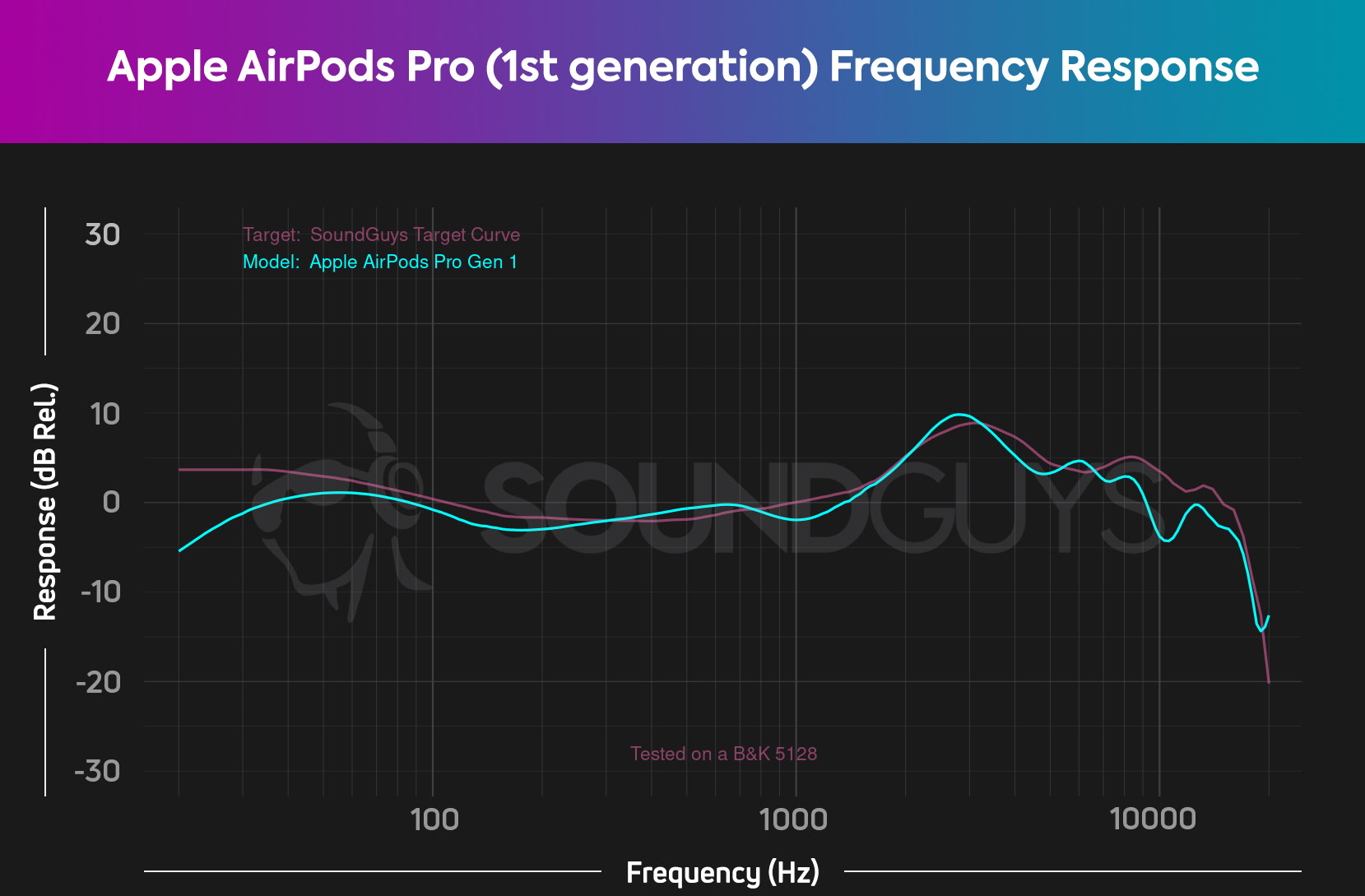
As many audio enthusiasts and reviewers will tell you, audio can be objectively measured, but subjective preferences matter just as well. In order to make the listening experience as uniform as possible, the AirPods Pro intelligently equalize music playback based on the shape of each listener’s ears. This combined with effective passive and active noise attenuation makes these sound markedly better than their forerunners. The chart above depicts the AirPods Pro’s frequency response (cyan) relative to the SoundGuys house curve (pink), which it posits as the platonic ideal for most consumers.
While bass notes receive some emphasis, it’s not as emphatic as what can be heard with the Beats Powerbeats Pro. Midrange frequencies (e.g., vocals) sound slightly quieter than bass and treble notes. This sound profile bodes well for pop and hip-hop, because you experience some low-end “oomph” and perceive even more detail from high-pitched sounds. It’s a generally consumer-friendly sound that pleases a large swath of listeners.
Is the microphone any good on the AirPods Pro (1st generation)?
AirPods have taken over as a primary method for taking hands-free calls. Just like the other AirPods models, the AirPods Pro have a solid microphone array for transmitting the human voice. Voices are relayed with minimal deviation across the vocal spectrum, which means your low-pitched voice and your friend’s high-pitched voice should both sound accurate when relayed with the AirPods Pro. You will hear some variation in vocal reproduction though as the mics can’t replicate a completely neutral response, but it should be fine for personal and business calls nonetheless.
Apple AirPods Pro (1st generation) microphone demo (Ideal conditions):
Apple AirPods Pro (1st generation) microphone demo (Street conditions):
Apple AirPods Pro (1st generation) microphone demo (Windy conditions):
How do these sound to you?
Apple AirPods Pro (1st generation) review: The verdict
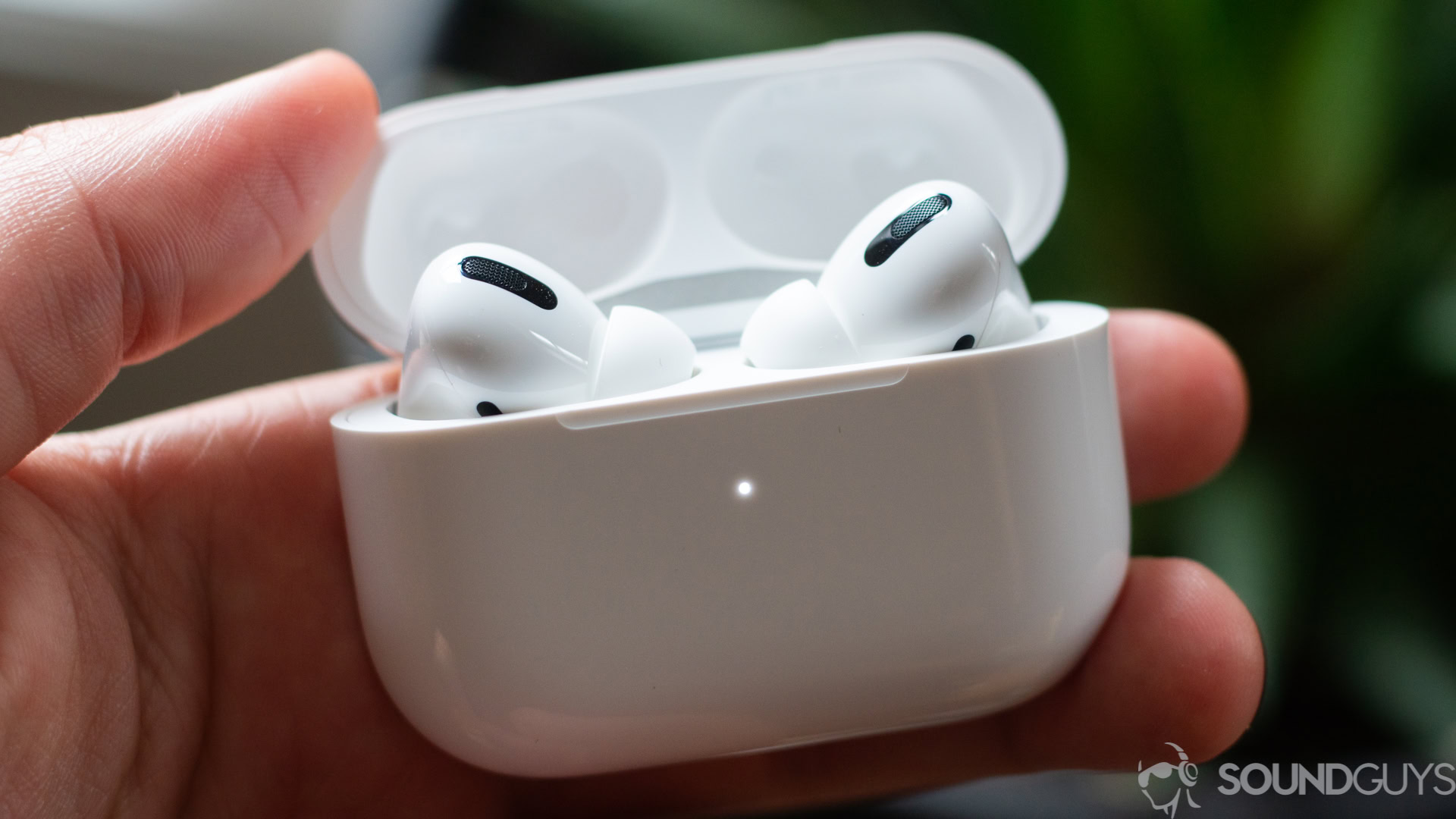
If you’ve been thinking about getting a pair of AirPods or happen to be an iPhone user, the Apple AirPods Pro are the only AirPods we recommend with gusto. Today, however, the AirPods Pro (1st generation) are no longer available. Instead, you’ll have to get the AirPods Pro (2nd generation). These cost $239 at Amazon. Not only do the noise-cancelling earpods sound notably better than their predecessors and the AirPods (3rd generation), but they support more features.
The Apple AirPods Pro are the only AirPods we recommend with gusto.
Yes, they’re more expensive than the AirPods with a wireless charging case, but you get a lot of useful features for that extra cash. Chances are high that if you’re an iPhone user, you’ve already committed to staying within the Apple ecosystem, which makes sense: Apple makes it easy to join and hard to leave the Cupertino family. For those who plan to remain within the Apple family, these are the Bluetooth earbuds to invest in. If you want to look a little closer at the differences between the AirPods Pro and 3rd-gen AirPods, read our guide here.

How do the Apple AirPods Pro compare to the AirPods, other true wireless earbuds?
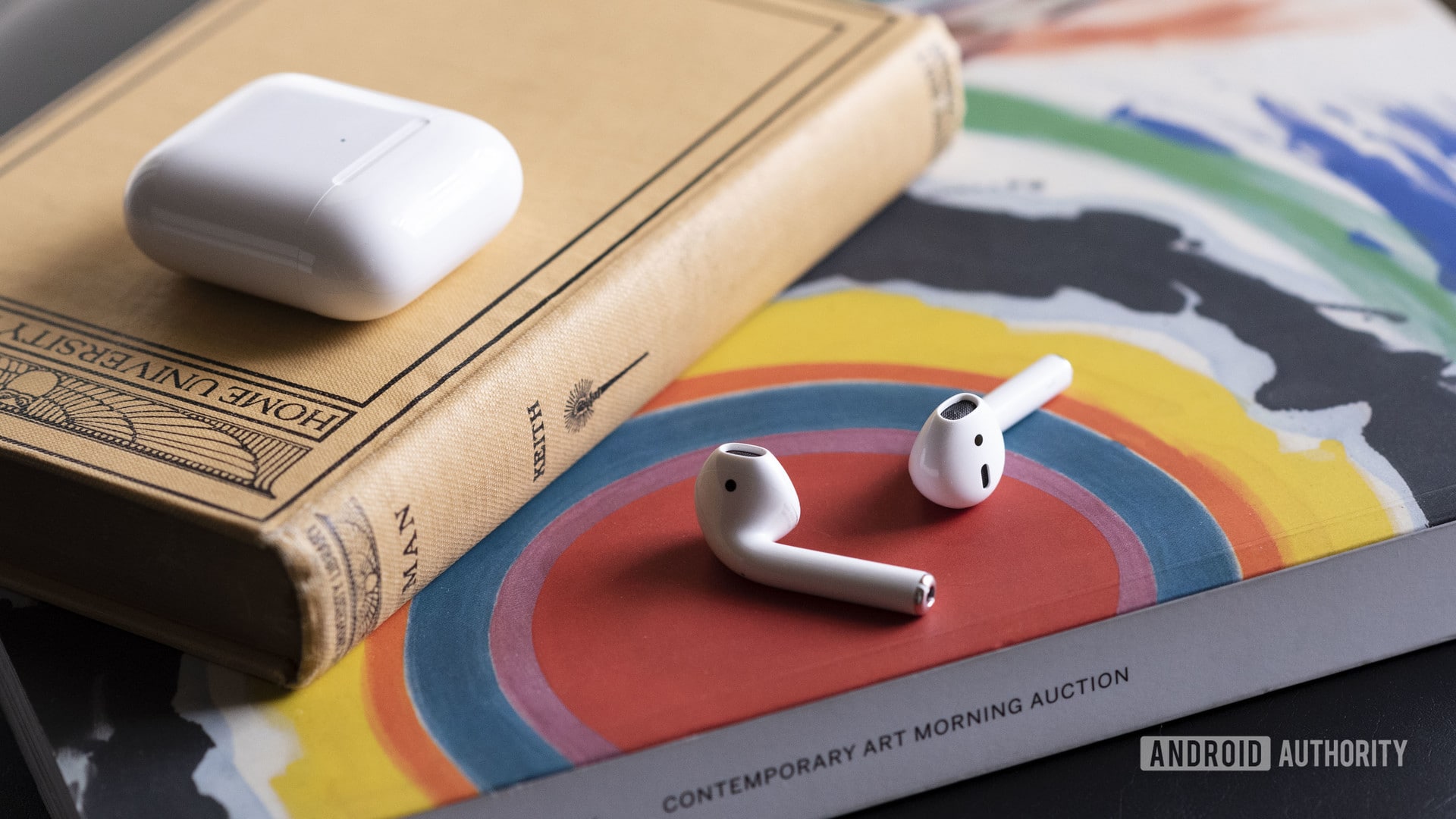
Apple remedies the most offensive design flaw of the standard AirPods models with the AirPods Pro: an unsealed ear canal. It may seem like audio enthusiasts are endlessly harping on the California-based company, but this design upgrade directly improves audio quality and fit. Getting a proper seal and rid of external noise is important because it prevents auditory masking, which is when loud noises (e.g., an air conditioner) make it difficult to hear quiet noises (e.g. the music coming from your AirPods). If you’re debating between the AirPods (3rd generation) and the AirPods Pro, get the AirPods Pro — unless you prefer open ear headphones. In that case, the unsealed AirPods will serve you well.
Now, if you’re considering other noise-cancelling true wireless earbuds, that’s a different story. The Sony WF-1000XM4 ($278 at Amazon) outperform the AirPods Pro’s noise-cancelling. The Samsung Galaxy Buds 2 Pro ($179 at Amazon) are great earbuds. Like the AirPods Pro, the Galaxy Buds 2 Pro are limited in their functionality and play best with Android smartphones, more specifically Samsung Galaxy phones. You get automatic device switching with Samsung devices and some of the best low-frequency ANC around.
iPhone users can also consider Beats, which is now owned by Apple. The Beats Fit Pro ($159 at Amazon) have premium features like ANC and spatial audio. The sturdy wing tips secure the IPX4 earbuds in place. No matter how hard our team tried, they could not shake the Fit Pro out of their ears.
Android users should consider the Samsung Galaxy Buds 2
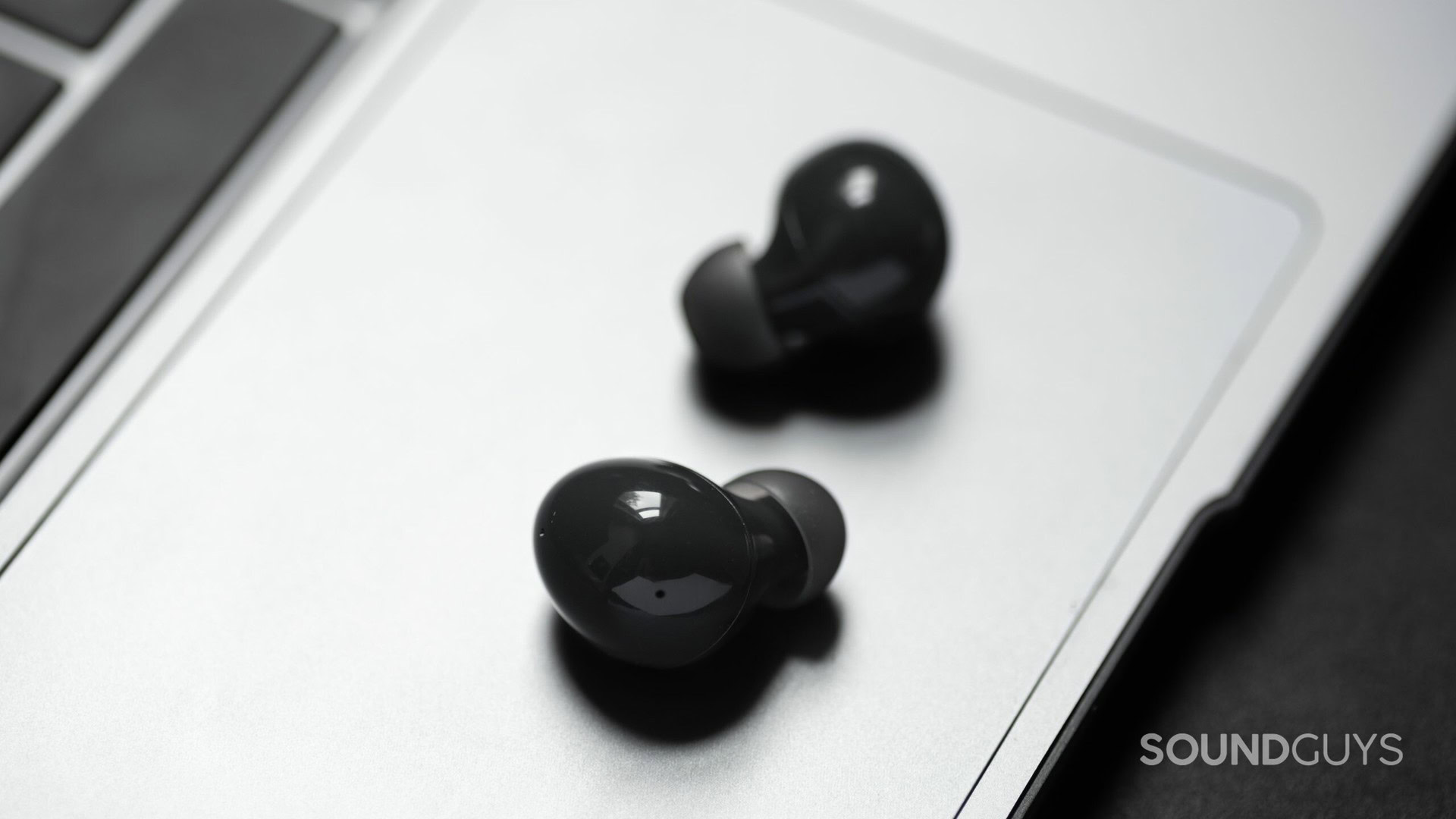
While Apple’s noise-cancelling earphones are compatible with Android devices, they don’t offer quite the same seamless experience as they do with iOS devices. Listeners who want to experience the same instantaneous setup process that iPhone users get should pick up a pair of the Samsung Galaxy Buds 2 ($99 at Amazon).
These earbuds sound good, have fast charging and wireless charging, and also have ANC. Additionally, they support Bluetooth 5.2, meaning you could have better battery life. They support the SBC, AAC, and Samsung Scalable codecs, so you have a lot of choice between different Bluetooth codecs depending on your preferences.
What about the Apple AirPods Max?
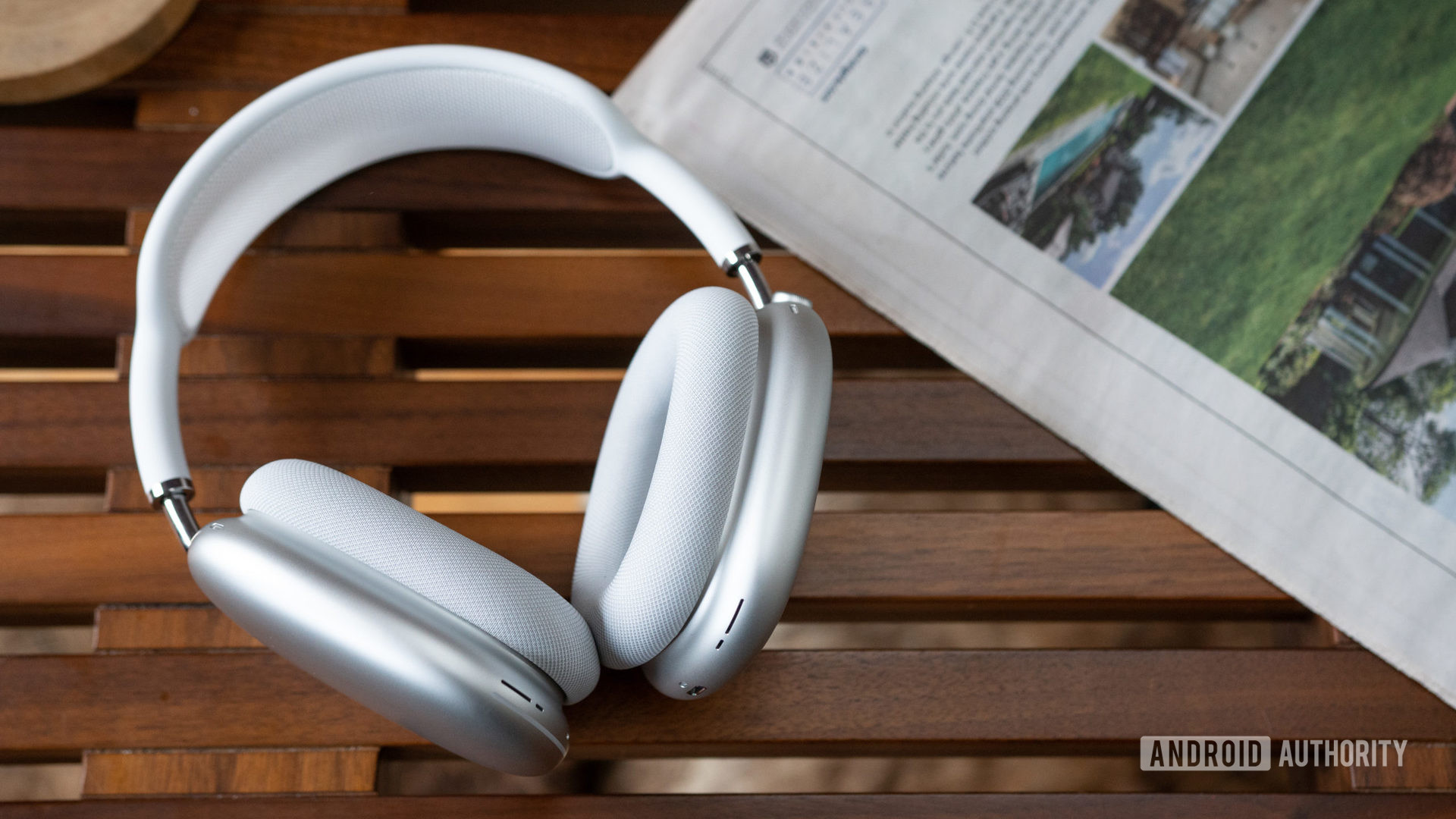
If you want to go all out on over-ear noise-cancelling headphones, you may want to consider the Apple AirPods Max ($399 at Amazon). This uses Apple’s Adaptive EQ technology to compensate for a sub-optimal fit, and houses an H1 chip in each ear cup for maximum processing power. If you want the best noise-cancelling on the market, the Apple AirPods Max is it. After all, Apple invented ANC, so it’s no wonder its debut headphones outperform the rest of the noise-cancelling market.
Then again, these headphones are for a very specific segment of the consumer audio market. Anyone who prides themselves on having the latest and greatest will surely justify the expense. Most listeners, though, will be just as happy with the AirPods Pro and a few hundred extra dollars in their wallets.